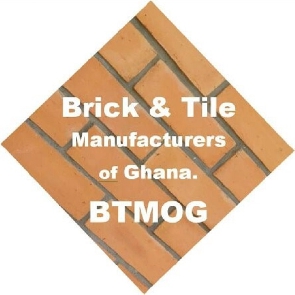Adopting the use of Local Building Materials in housing delivery couldn’t have come at any better time than in this post-pandemic economic crisis era where smart nations seek to “Look within and make good use of local materials for production, construction, food consumption, and healthcare”.
Such bold initiative shall make Ghana less dependent on excessive imports and save our economy from global commodities market inflations and economic meltdowns/shocks.
Our current government’s determination spear-headed by the Hon. Minister for Work & Housing, Francis Asensu Boakye, to actively mainstream the use of local building materials to reduce Ghana’s housing deficit as a sustainable cost-effective step is highly commendable and must be supported by stakeholders and development partners alike.
To sustain this bold initiative, there must be an L.I, or Cabinet Policy document that also enjoins MMDAs to use local building materials, such as burnt clay bricks and tiles, pozzolana cement, and related products as well as enhanced CEB & bamboo materials to construct classrooms, dormitory blocks, libraries, hospitals/clinics, warehouses, government offices and affordable housing units across Ghana.
Such policy implementation would significantly create the needed ready market for local building materials and make the sub-sector attractive to investors for socio-economic growth. Producers will have a shorter time to plow back returns on their investments, take care of employees, and reinvest back in the business.
The Clay Brick
Clay bricks and brick tiles are man-made materials that are widely used in constructing buildings, civil engineering works, and landscape designs worldwide. They are also used for paving footpaths, sidewalks, driveways, and façade cladding.
Research has proven burnt Bricks as perhaps the most durable man-made building material.
Fortunately, Ghana is endowed with abundant clay deposits in all 16 regions that could sustain a major brick and tile industrial transformation and lead Ghana into massive local production and use of clay brick and ceramic products for housing delivery and reduce our deficit gap in a much cost-effective manner.
Current active brick production areas include:
1. Ashanti Region: Afari, Mfensi, Ntensere, Aputuagya, Adankwame, and Adansi Asokwa
2. Bono region: Adantia and Tanoso areas
3. Eastern Region: Akuse, Koforidua, Nkawkaw
4. Central Region: Ankaful, Winneba, Gomoa area, Ajumako, Mankessim 5. GT. Accra: Afienya East
6. Volta Region: Adutor, Adidome, Vume
7. Savannah Region: Buipe
8. Upper West: Wa West
Production
Production of burnt brick products does not require any imported raw materials, as such bricks come as a less expensive, but durable eco-friendly local substitute or composite material for building construction.
Advantages
According to CSIR-BRRI, bricks have been proven globally to have the highest compressive strength and lower water absorption than other building materials. Bricks are finished products and do not require plastering or painting of walls when used.
The thermal mass and moisture that bricks absorb can help keep the temperature in any building relatively constant during the day and night making them energy efficient. Clay Burnt bricks provide better indoor air quality (IAQ) since it does not emit any volatile organic compounds. Again Brick walls reduce noise transmission and are fire resistant.
Quality Bricks do not warp, rust, split, peel off, or fade. They do not harbor termites and are naturally beautiful. Their low maintenance and durability make the materials a long-term cost-effective option for building construction.
Some School blocks, public buildings and clinics that were built in burnt clay bricks over 20 years ago in parts of Ghana have not required maintenance or painting, and are still looking good.
Conclusion
In conclusion, we want to congratulate the government for keeping to its manifesto promise to mainstream clay-burnt bricks as well as other quality local building materials in its quest to reduce Ghana’s housing deficit significantly and eventually create acceptability among the general populace for local building materials as their continuous use, quality, and benefits become more evidenced or experienced in many government & private buildings in Ghana.
“Visibility creates acceptability among people.” (a quote by Hon. Francis Asenso Boakye, MP & Minister for Works and Housing).
“Massive exploitation of Ghana's clay for POZZOLANNA CEMENT instead of imported clinker and BRICK & TILE production in the districts will result in retention of capital in the economy, create employment and generate revenue to the country and communities and above all reduce housing cost “. (Ing. Dr. Atiemo: former director CSIR BRRI: 2015).
Let’s continue to look within as COVID-19 has taught us and redirect such capital into our local economy to stabilize the cedi against major currencies, create jobs and wealth to improve the standard of living at all levels, reduce rural-urban migration and expand our local manufacturing base to progressively make Ghana less dependent on imported building materials which connect well with current government’s integrated industrialization agenda/vision.
As an association, the Brick & Tile Manufacturers of Ghana is ever grateful to be a collaborative partner in Ghana’s affordable housing delivery and also assure government and stakeholders/private developers of our support in quality products and services to realize your mandate of increasing affordable housing delivery to every income bracket in Ghana as well as meeting the global Sustainable Development Goals.
BRICKS NOW or NEVER!!!!
Press Releases of Monday, 7 August 2023
Source: Brick & Tile Manufacturers of Ghana













